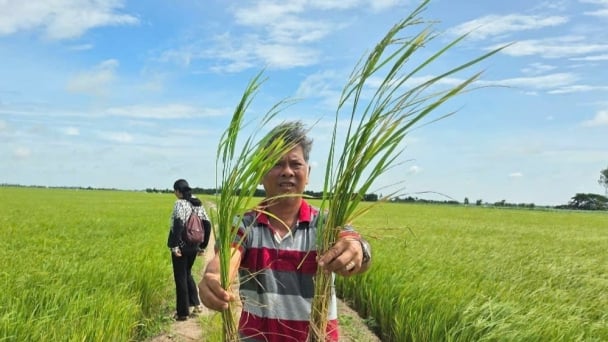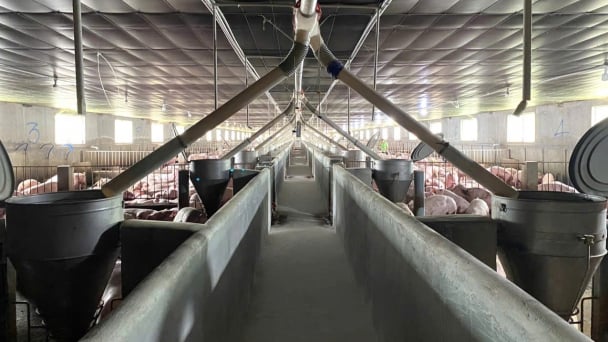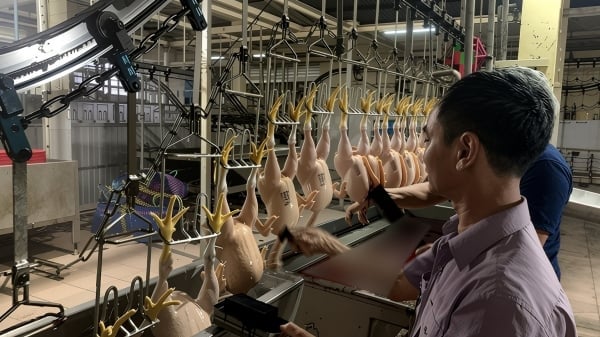August 31, 2025 | 15:34 GMT +7
August 31, 2025 | 15:34 GMT +7
Hotline: 0913.378.918
August 31, 2025 | 15:34 GMT +7
Hotline: 0913.378.918

The Blue Revolution team.
These commitments will enable BRF to invest in more than a dozen early-stage aquaculture ventures, with the aim to improve ocean health, address the impacts of climate change and support coastal communities.
“With the right practices and technologies, aquaculture can be a force for good, providing a low-carbon food source while actively supporting ocean health,” said Robert Jones, director of global aquatic food systems for The Nature Conservancy. “Through strategic investments, BRF aims to accelerate the development and adoption of technologies and farming practices that have the potential to move aquaculture closer to realising its nature-positive potential.”
BRF’s unique structure promotes both its financial and environmental success. As BRF’s investment manager, Hatch Blue is using its previous fund management experience and expertise in aquaculture, alternative seafood and blue carbon to oversee fund operations, investment execution and asset management.
“We are a knowledge-driven specialist firm with synergetic business activities,” said Georg Baunach, managing partner and co-founder of Hatch Blue. “Across 32 team members, we consist of two investment teams, a consulting team, an innovation programmes team, and a media marketing agency with an adjacent news website. Our setup generates unique insights that allow us to add value to our portfolio firms, investors and other clients. The final closing of the BRF above our target of €75 million is a promising sign that the investment community values this approach.”
A global environmental nonprofit grounded in rigorous science, The Nature Conservancy acts as BRF’s conservation manager, ensuring that investments deliver meaningful environmental outcomes.
“Private capital needs to play a crucial role in addressing the climate and biodiversity crises,” emphasised Lauren Ferstandig, managing director of NatureVest, TNC’s in-house impact investing and sustainable finance team, which worked closely with Hatch Blue to build impact outcomes into BRF investment structure.
“The Blue Revolution Fund is an example of a scalable investment solution that not only delivers a financial return to investors but also models a more sustainable approach to aquaculture investing by building measurable conservation outcomes into every investment.”
BRF is targeting investments into in next-generation fish farms, regenerative seaweed and bivalve farming, nutrition, enabling technology, health and genetics, and alternative seafood. To date, the fund has made investment into the following companies:
“The fund focuses on solutions that provide both financial and environmental returns, such as innovative feed ingredients that surpass existing ingredients in sustainability while maintaining cost-competitiveness,” said Baunach. “Technologies, health, or genetic solutions that enhance feed conversion ratios or survival rates also present interesting opportunities due to the current surge in input costs and their close alignment with reducing Scope 3 emissions.”
In the coming months, BRF anticipates investing in around nine additional companies. Early next year, TNC and Hatch Blue will release guidance resources for pre-investment conservation diligence and portfolio impact measurement and reporting in the aquaculture impact investment sector. These resources will support other investors in choosing investment opportunities that generative attractive financial returns and positive environmental impacts.
(The Fishsite)
/2025/08/30/3629-3-183157_351.jpg)
(VAN) Prof. Dr. Phan Sy Ky, former Deputy Minister of Agriculture and Rural Development, affirmed, 'Never before has the irrigation sector had such a career and confidence as it does today.'
/2025/08/30/5239-5-024833_424.jpg)
(VAN) With the construction of the 'great canal' to channel freshwater and irrigation sluice and dike systems, the once acidic and alum-contaminated lands of Dong Thap Muoi and the Long Xuyen Quadrangle have revived.
/2025/08/29/5326-0-nongnghiep-105322.jpg)
(VAN) From a few hundred million USD in the late 1990s, Vietnam's wood exports have soared to USD 15 billion in 2025, affirming its status as a global powerhouse in wood processing and furniture manufacturing.

Instead of burning, microbial technology helps farmers turn millions of tons of straw into organic fertilizer, saving costs and protecting the environment.
/2025/08/28/5450-5-164042_320.jpg)
(VAN) From the risk of complete forest loss after the war, Vietnam has restored forest cover to more than 42%, becoming an international bright spot in forestry and sustainable development.

(VAN) Facing the risk of ASF outbreaks, Tay Ninh has strengthened disease prevention, and many farms have set up 'biological shields' to stabilize production.

(VAN) With a high demand for livestock slaughter, the veterinary sector of Vinh Long has tightened control to prevent unsanitary food from entering the market.